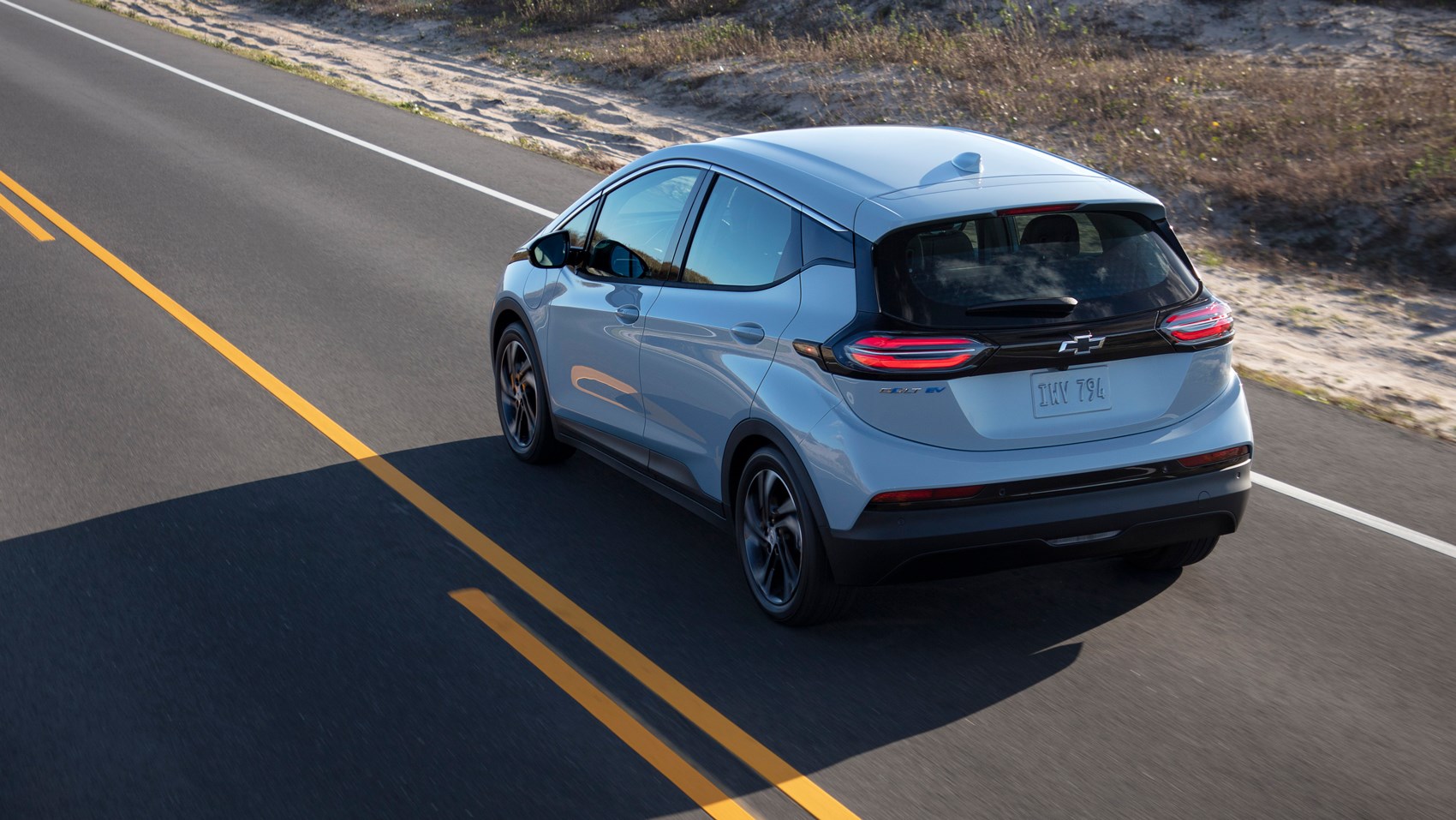- CAR drives Chevrolet’s electric supermini
- Claims up to 259 miles on a charge
- It could return to Europe in the near future
Think Europe is the dominating force in building electric superminis? It may well be, but Chevrolet has been at it for years across the pond with the Bolt.
This latest one has a footprint in between the supermini-sized Renault Zoe and bigger family hatch EVs like VW’s ID.3 and even the new MG 4. And with GM’s recent announcement that it would re-enter Europe with an all-EV line-up means the Bolt could be one of the cars it ships across the pond in the years to come.
I’d better pay attention then…
Well, you’ll likely have at least heard of the Bolt in some capacity, given the name has been used by Chevrolet since 2016 for its entry-size EV for the North American market, and it was rebadged the Opel Ampera-e on the continent. But, ever since GM Europe almost entirely turned its lights off after selling the Opel/Vauxhall brands to PSA (now Stellantis) in 2017, we’ve not seen much beyond that in the European market.
General Motors electric plans: Ultium platform explained

The current Bolt available in North America has evolved a little since the days of the Ampera-e, with design refreshes and advancements in both powertrain and interior tech. There’s now even a Bolt ‘EUV’ variant (pictured above in grey), which is a smidge taller and wider with some added off-road-ish body cladding (think of the Ford Fiesta and its ‘Active’ version and you’ve got the gist).
Chevrolet says the Bolt has both 120V and 240V charging abilities for the North American market’s power supply, as well as DC charging that allows for ‘up to 100 miles in 30 minutes’ to be zapped into the battery pack.

Inside, it’s functional and no-nonsense. Those who have or currently drive mid-2010s Vauxhalls might see some familiar switchgear, and the infotainment system on its big glossy screen is simple enough to use. The Bolt also has a small square-ish digital instrument cluster, too. Equipment is good, with every Bolt having wireless Apple CarPlay and Android Auto, as well as a huge suite of standard safety tech. Our test car was also fitted with General Motors’ Super Cruise semi-autonomous driver assistance system.
Space inside is impressive for something smaller than an ID.3; rear space is good enough even for tall adults behind a tall driver, and the 470-litre boot is larger than VW’s electric hatch, the Renault Zoe and Tesla’s Model 3 and on par with BMW’s i4. It is quite a tall-rather-than-deep load area, though.
So, how does it drive?
Let’s start with the powertrain itself, as it’s certainly zippy enough. It’s a quicker sprinter than an ID.3 and about on par with Cupra’s more powerful e-Boost version of its Born sibling.
There’s not much in the way of an acoustic accompaniment that so many other manufacturers try to include just for the hell of it, just punchy progressive power available at the flex of your big toe. The Bolt also has a one-pedal driving mode, like many EVs, allowing for easy-going city driving.
The rest of the driving blend is… fine. The steering, for example, is super light and rather numb – great for just pootling through suburban streets or keeping your cool on the motorway, but there’s little in the way to get you excited if you find yourself on a good road.

As for the ride, it errs on the firm side during our test drive through and around Detroit, catching plenty of bridge expansion gaps and throwing back jolts up your seat. Tyre noise is rather pronounced, too, with coarser road surfaces particularly introducing a persistent roar.
Essentially, though, it’s just a little joyless to drive. That doesn’t mean the Bolt is a bad car, but Chevrolet has very much continued the Bolt’s theme of being a nippy bit of transport for those that need it, but little else.
Chevrolet Bolt EV: verdict
Comparing it to European rivals, the Bolt very much sits at the practical end of the EV spectrum.
While it’s outclassed in the personality department by almost everything, it has a bigger range than a Renault Zoe and feels just as technologically advanced and with a similar fit and finish inside as VW’s ID.3. Add to the fact that Chevrolet’s designers and engineers have created a car that’s smaller than the VW but has more space inside, and you have an electric car that’s very much a rational choice.
